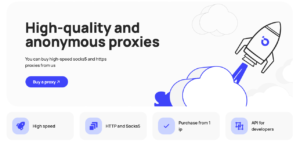Table of Contents
In an era where organizations are increasingly flooded with data, reporting at scale has never been more crucial. Let’s dive deep into why scalable reporting is essential. Stay with us as we discuss how to create a framework for scalable reporting and more.

Understanding the Importance of Scalable Reporting
Alt text: A person working in a adark office on a computer with three screens implementing reporting at scale.
In today’s data-driven world, the ability to analyze large data sets efficiently and accurately is a significant competitive advantage for businesses. Scalable reporting allows organizations to handle increasing data volumes effectively without compromising processing speed or data integrity. This is crucial in the age of big data, where businesses must process vast amounts of data rapidly to gain insights and make informed decisions.
Scalable reporting also aligns with the evolving needs of businesses as they grow. For smaller companies, a simpler reporting system may be adequate. However, a more scalable reporting system becomes necessary as the organization expands, launching new products, entering new markets, and accumulating more data.
Efficient and accurate reporting at scale allows businesses to improve operational efficiency, enhance decision-making, and drive growth. It enables organizations to analyze data from multiple sources, derive insights quickly, and promptly respond to changes in their business environment.
Furthermore, scalable reporting helps organizations ensure compliance with regulatory requirements. With the ability to handle large datasets, businesses can efficiently generate comprehensive reports required by regulatory bodies.
Also Read: Responsible Play: Gambling Ethics in Online Table Games
Key Features of a Scalable Reporting System
A scalable reporting system should have certain features that set it apart from regular reporting tools. It should have an architecture that can efficiently handle large volumes of data. This includes the ability to function effectively even as data multiples, demonstrating scalability in terms of capacity.
The system should be able to handle complex data structures and queries. As businesses grow, the complexity of their data and reporting needs also increases. Hence, the system must be equipped with an efficient database to handle this evolving complexity.
While a scalable reporting system may be able to handle huge data volumes and complex queries, its utility would be limited if users find it difficult to use. Thus, a good scalable reporting system should have an intuitive interface and easy-to-use reporting tools.
Finally, the system should have robust security measures. In handling large amounts of sensitive data, the system must have stringent security protocols to protect the data from unauthorized access or data breaches.
Also Read: Account Planning: A Collaborative Approach to Success
Steps To Create a Framework for Scalable Reporting
Alt text: A person sitting at a desk with many computer screens analyzing reporting at scale.
The first step in creating a scalable reporting framework is understanding the organization’s reporting needs. This includes identifying the organization’s data type, its source, and how it will be used. It also involves understanding the desired output, such as the type of reports required and the level of detail needed.
Once the reporting needs have been identified, the next step is to design the data infrastructure. This should be designed considering the volume of data, its complexity, and the need for scalability. The database should be structured to accommodate increasing data volumes over time.
The third step involves selecting the right reporting tool. The tool should be capable of handling the organization’s data volume and complexity, and it should also have features that make report generation easy and intuitive for users.
Finally, the framework must be implemented per the organization’s data security guidelines. Regular audits should be conducted to ensure that the system functions optimally and the data is secure.
Scalable reporting is an essential component of a successful, data-driven business strategy. It allows organizations to handle increasing data volumes efficiently, provides flexible and comprehensive reporting capabilities, and enables businesses to meet regulatory reporting requirements more efficiently.



